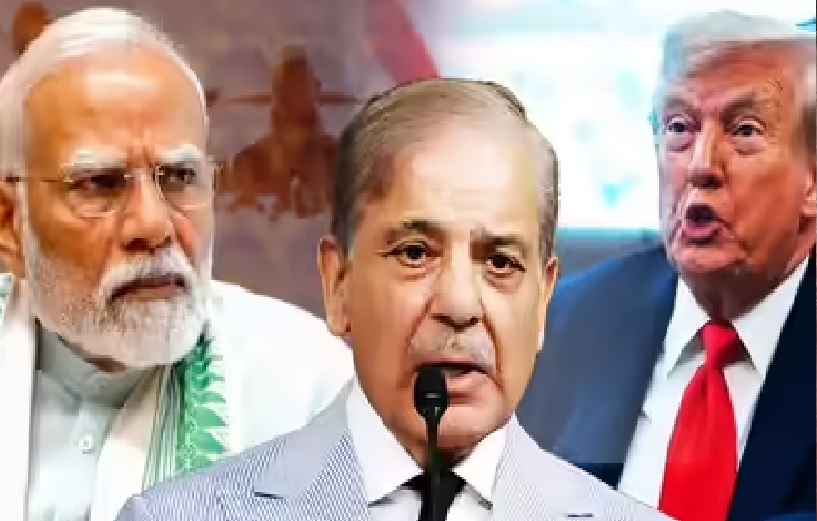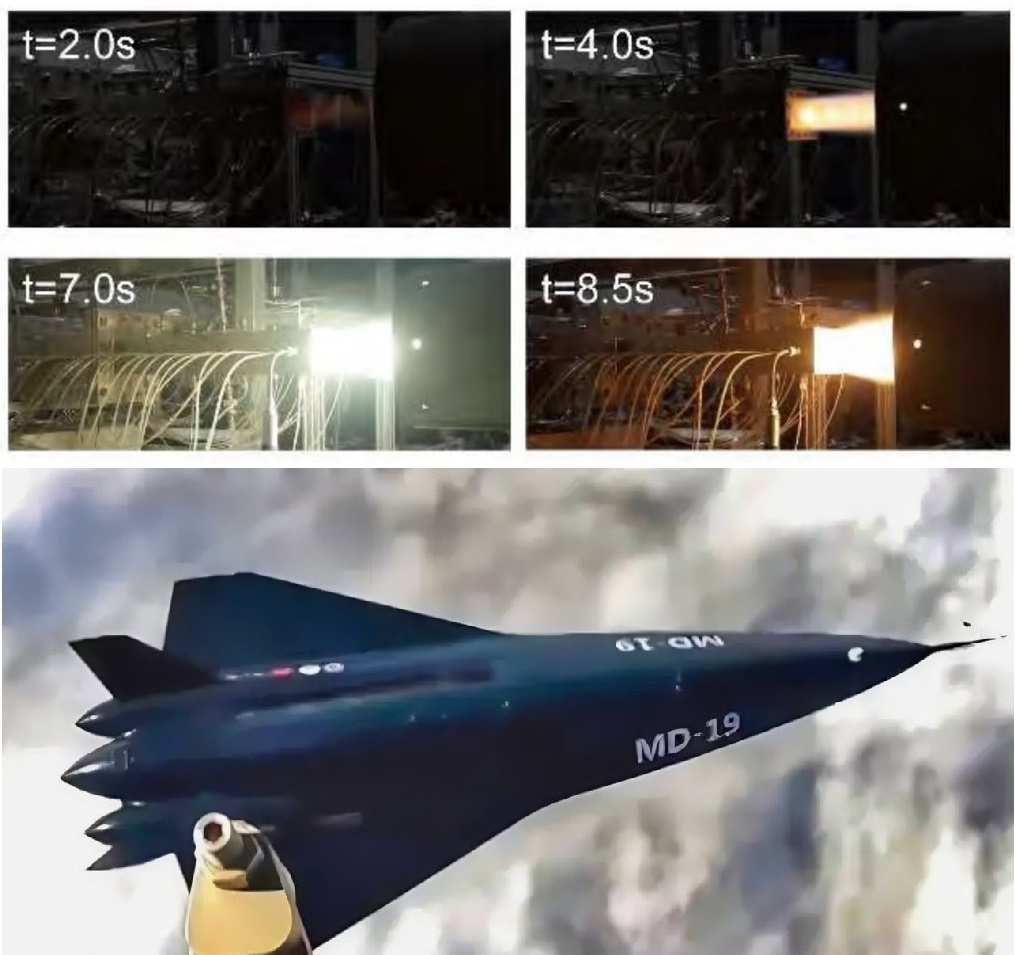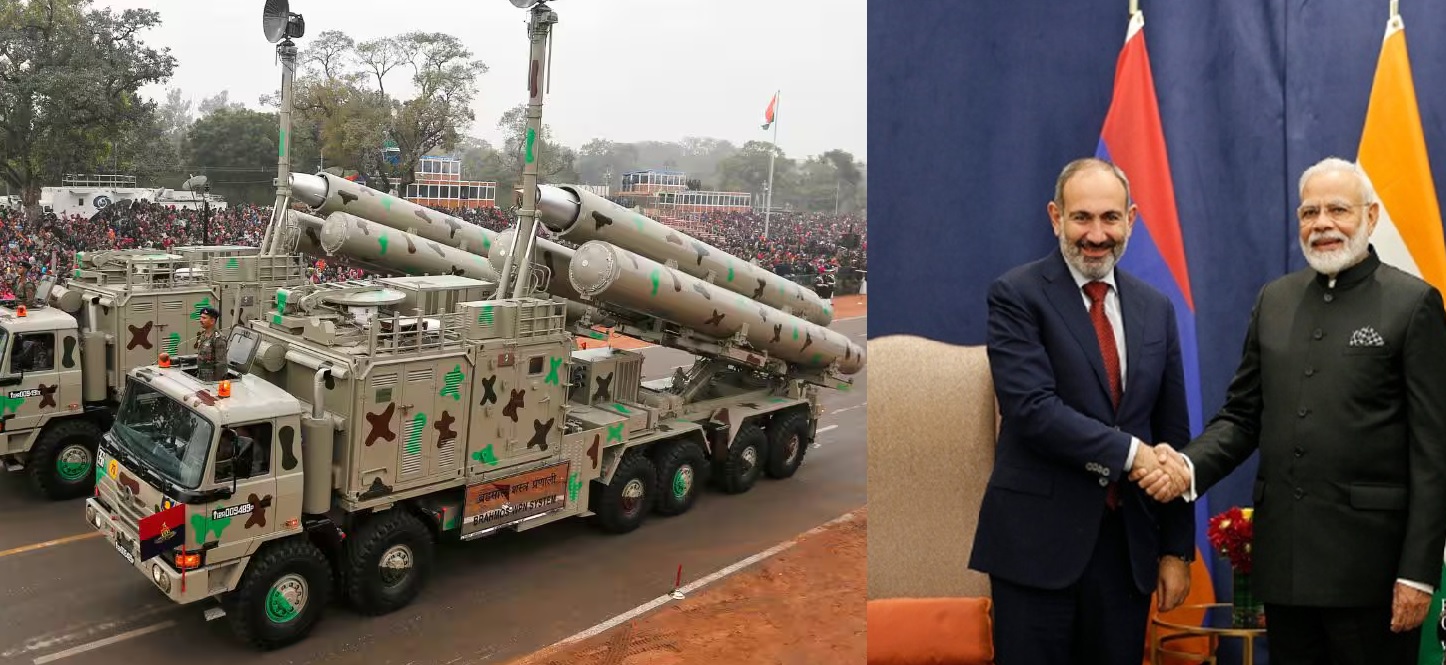Trump Reveals It Was Pakistan That Begged for Ceasefire in May 2025 Conflict

Former U.S. President exposes Islamabad’s secret plea after heavy military losses and damaged bases
Before Donald Trump’s stunning revelation, defense analysts and global intelligence reports had already indicated that it was Pakistan — not India — that first begged for a ceasefire during the intense May 2025 conflict. Satellite imagery released in the days following the clashes revealed extensive damage to Pakistani airbases, radar stations, and forward-deployed assets, confirming that Islamabad had suffered a far heavier blow than it publicly admitted.
Now, Trump’s latest comments have confirmed what the world already suspected — that Pakistan’s Prime Minister Shehbaz Sharif personally pleaded with Washington to intervene before the crisis escalated into what he described as a potential “nuclear war.”
“They were going to have a nuclear war with Pakistan,” Trump said in his latest interview.
“The Prime Minister of Pakistan stood up the other day and said, if Trump didn’t get involved, many millions of people would have been dead right now.”
These remarks directly point to Shehbaz Sharif’s acknowledgment that U.S. intervention under Trump’s guidance stopped the war, a truth that completely contradicts Pakistan’s official narrative that India asked for a ceasefire first.
Global Analysts Already Knew: Pakistan Was the First to Plead
Even before Trump’s words, military satellite analysis from multiple international agencies had shown Pakistan’s infrastructure in ruins after the intense May 2025 engagements along the Rajasthan–Sindh and Sialkot–Jammu sectors. Independent analysts from the U.S., France, and India identified cratered runways, destroyed hangars, and charred radar domes at key Pakistani airbases, including Mianwali, Shorkot, and Jacobabad.
Radio intercepts captured by defense intelligence agencies suggested urgent calls from Pakistan’s General Headquarters (GHQ) to American and Chinese military attachés, seeking emergency diplomatic channels to stop the Indian offensive.
This clear pattern of panic left little doubt: Pakistan had lost control of the escalation, and its leadership feared that India might strike deeper if hostilities continued.
Trump Confirms: Shehbaz Sharif Pleaded for U.S. Help
In Trump’s own words, it was Shehbaz Sharif who stood up publicly and praised him as a “Man of Peace.” That remark, made during an Islamabad press conference shortly after the ceasefire, now takes on a new meaning.
At the time, Shehbaz’s statement appeared to be routine diplomacy. But Trump’s revelation exposes it as a confession — an acknowledgment that U.S. intervention saved Pakistan from total military humiliation.
“If Trump didn’t get involved, millions would have died,” Shehbaz said, calling the former U.S. President “a man who prevented war.”
Trump’s recollection makes it clear: Pakistan begged Washington to stop the war before it lost more aircraft, bases, and credibility.
Eight Pakistani Aircraft Downed — Not Seven
Perhaps the most explosive part of Trump’s statement was his offhand mention that “eight planes were shot down” — a figure that aligns with independent defense analyses but exceeds Pakistan’s own admission.
During the May 2025 conflict, Pakistan’s Air Force launched a series of retaliatory sorties against Indian positions in Rajasthan and Punjab. In response, the Indian Air Force (IAF) conducted electronic counter-air missions and precision strikes, downing multiple Pakistani aircraft over the border zone.
Initial Pakistani claims stated that only “a few drones and one aircraft” were lost. But post-conflict radar data, intercepted communications, and satellite heat signatures suggested at least eight confirmed losses, including JF-17s, one upgraded F-16 Block 52, and several UAVs.
Trump’s statement confirms U.S. intelligence had a precise assessment — and that Pakistan’s losses were far higher than admitted publicly.
Satellite Imagery Exposed Pakistan’s Damaged Bases
Within 48 hours of the ceasefire, international commercial satellites — including those operated by Maxar Technologies and Airbus Defence — released imagery showing large-scale damage at Pakistani airbases.
At Mushaf Air Base (Sargodha), satellite photos showed burnt shelters and smoke plumes still visible days later. At Mianwali, two hardened aircraft shelters were visibly cratered, suggesting precision strikes by India’s stand-off weapons. Near Jacobabad, radar installations and a logistics depot appeared destroyed, consistent with Indian use of long-range SPICE and Rudram anti-radiation missiles.
These visuals left no doubt that Pakistan had absorbed significant punishment, contradicting its official claims of minimal damage.
The False Narrative: Pakistan’s “India Asked First” Lie
After the ceasefire was declared, Pakistan’s state media immediately claimed that India was the one who requested an end to hostilities — a narrative pushed domestically to protect the government and military from backlash.
But diplomats in Washington, New Delhi, and London already knew the truth: Pakistan was the one begging behind closed doors.
Trump’s admission simply made public what intelligence circles had been whispering for months — that Islamabad’s ceasefire appeal was born from fear, not strategy.
Strategic Aftermath: India Held the Upper Hand
By the time the ceasefire took effect, India had already achieved air and electronic superiority, having successfully neutralized several Pakistani radar sites and forward air defenses.
Sources in the Indian defense establishment described the May 2025 conflict as “decisive and one-sided”, with Pakistan unable to match India’s advanced drone warfare, electronic jamming, and missile strike capability.
For Islamabad, the cost was steep — not just in military losses but in credibility. The revelation that its leadership secretly sought Trump’s help, while publicly claiming victory, has now destroyed Pakistan’s moral and strategic narrative.
✍️ This article is written by the team of The Defense News.






